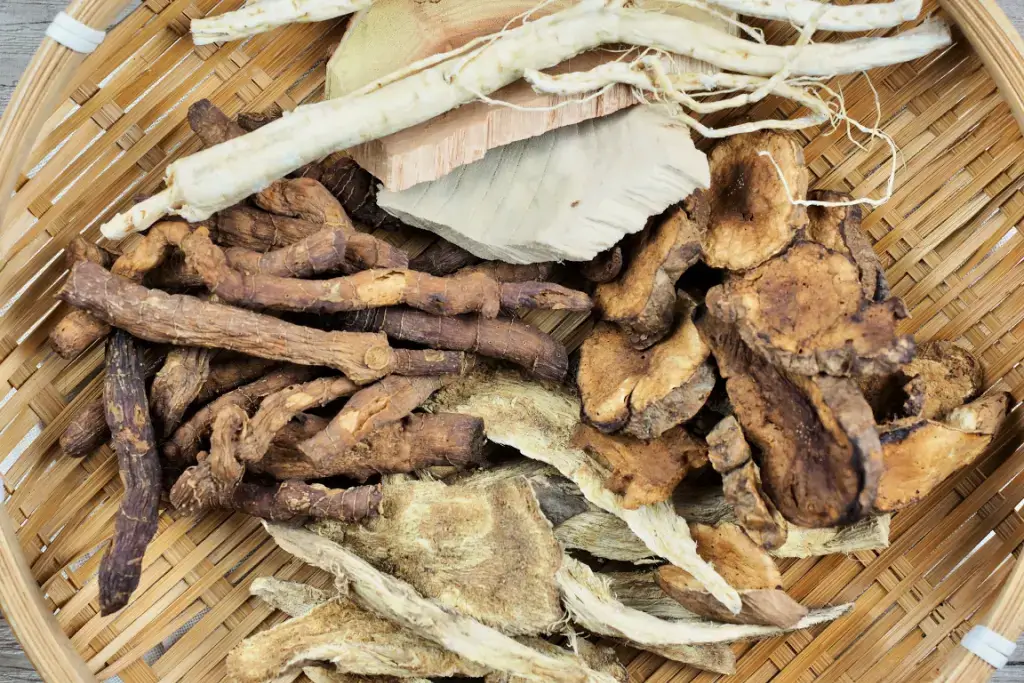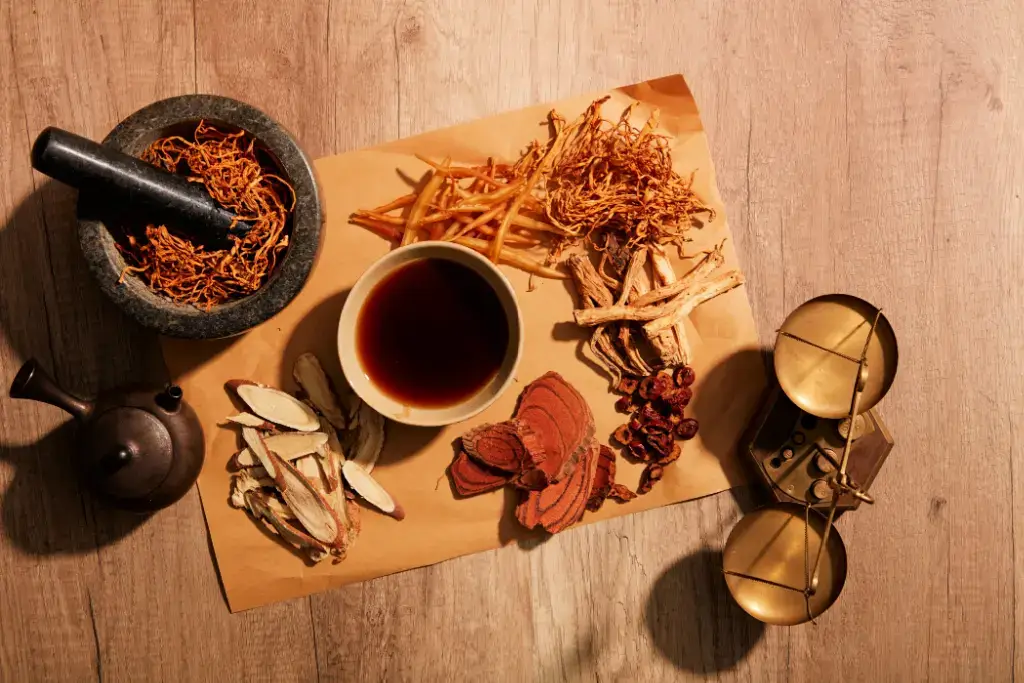kampo, traditional medicine
Traditional Medicine in Japan: What is Kampo?

Thalia Harris
Posted on August 26, 2024
Share:

Traditional medicine in Japan combines ancient herbal practices with modern healthcare, creating a unique approach to wellness that has stood the test of time. This holistic system continues to thrive, offering patients a blend of tradition and innovation in their health journeys.
What is “traditional medicine”?
Traditional medicine treats health problems that have been used for a long time in different cultures worldwide. Think of it as the old-fashioned method of keeping people healthy and treating illnesses passed down from generation to generation. Some examples of traditional medicine include using herbs and plants to create healing teas or ointments, acupuncture—which involves placing tiny needles in specific body parts—special massages or exercises to relieve pain or stress, and dietary practices based on ancient beliefs about health.

Different regions have unique systems of traditional medicine. For example, traditional Chinese medicine and Ayurveda from India are two well-known types of medicine. Even though modern medicine is widely used today, many still practice or benefit from traditional medicine. Sometimes, doctors combine traditional methods with modern treatments to help patients feel better.
It’s important to remember that not all traditional remedies have been scientifically proven to work, and some could even be harmful. Always talk to a doctor or healthcare professional before trying new treatments, whether traditional or modern.
What are common ingredients in Japanese traditional medicine?
Traditional Japanese medicine, called Kampō, uses many natural ingredients that people have been using for hundreds of years. While it was inspired by old Chinese medicine, Kampō has grown into its special type of healing.
Herbs are super important in Kampō. Many different herbs are used, each with its own job. For example, some special mushrooms like reishi and shiitake are popular because people think they can help make your body stronger and healthier. Another famous herb is Agaricus blazei, which some believe can help people with serious health problems.

Kampō doesn’t just use plants, though. It also uses some things from animals, like musk and rosin. People think these ingredients can help heal the body. Kampō doctors mix these ingredients in particular ways, following old recipes to ensure they work well together.
In Kampō, doctors use all the parts of plants—the roots, leaves, and flowers. They prepare these parts carefully to extract the most healing power. The cool thing about Kampō is that it doesn’t just try to fix one problem. Instead, it aims to make your whole body feel better and more balanced.
Are you looking for amazing snacks from Japan? Check out Sakuraco! Sakuraco delivers traditional Japanese snacks, teas, sweets, and snacks from local Japanese makers directly to your door so you can enjoy the latest treats from Japan!
Who invented Kanpo?
Kampo wasn’t created by just one person. Instead, it grew and changed over hundreds of years thanks to the work of many doctors and smart people. Kampo started from Chinese medicine, which came to Japan about 1,500 years ago. Over time, Japanese doctors changed these practices to better suit Japanese people and their needs.

A critical person in Kampo’s history was Yoshimasu Todo, a doctor who lived about 300 years ago. He helped make Kampo more Japanese by focusing on what he could see and feel in patients rather than just following old ideas. For example, he invented a way to check patients by feeling their stomachs, which became a big part of Kampo doctors’ work.
During the Edo period (1603-1868), Japanese doctors studied Chinese medicine closely and made changes. They selected the 300 best herbs from all the Chinese ones and created about 300 standard recipes for medicines. Even though Kampo came from Chinese medicine, it became its own unique thing over time. Japanese doctors adapted it to fit Japan’s weather, culture, and the health problems Japanese people often had. This is why Kampo is different from Chinese medicine today.
What are the health benefits of Kanpo?
Kampo, the traditional Japanese system of medicine, offers various health benefits through its holistic approach to treatment. One key advantage of Kampo is its ability to relieve symptoms of various conditions. For instance, certain Kampo formulations are used to alleviate digestive issues and improve overall gastrointestinal health.

Another benefit of Kampo is its effectiveness in pain management. Some Kampo medicines have been found to help reduce discomfort associated with conditions like osteoarthritis, allowing individuals to move more freely and comfortably.
While Kampo offers these potential benefits, it is often used alongside modern Western medicine in Japan. This integrated approach combines the strengths of both traditional and contemporary practices to provide comprehensive care for patients.
Why do people still take traditional medicine in Japan?
Traditional medicine, especially Kampo, is still prevalent in Japan for a few critical reasons. First, Kampo is part of the national healthcare system, which means it is easy to access and often covered by insurance. Many doctors prescribe Kampo medicines and Western treatments, giving patients a well-rounded approach to their health. People often find Kampo effective for managing different health problems, especially long-lasting ones, and they believe it has fewer side effects compared to some Western medicines.

Another reason people like Kampo is that many of its products are available over the counter, so individuals can easily buy them for minor health issues without needing a prescription. This combination of traditional knowledge and modern medicine makes Kampo appealing to many who want a more complete way to care for their health. What do you think about the use of traditional medicine in Japan? Feel free to leave a comment below!

Discover authentic flavors with Sakuraco
Get Sakuraco 

Discover authentic flavors with Sakuraco
Get Sakuraco 
Related Articles

Ebisu: The Cheerful Guardian of Luck and Prosperity
Religion in Japan involves a dizzying array of spirits and beings. These gods are inspired by ancient tales and used to symbolize nature’s bounty. However, they also profoundly impact daily life and are often sought out for help in challenging times

Little New Year in Japan: Discovering Koshogatsu Traditions
When people think of the Japanese New Year, they typically associate it with January 1st. It’s a time for celebrations, family, special foods, and visits to shrines for hatsumode (first prayer of the year).

Hatsumode: Why Is It Japan’s Most Important Tradition?
Hatsumode is the first visit to a shrine or temple in the New Year in Japan, and it is one of the country’s most important traditions. Every year, millions of people participate, demonstrating the profound connection between this custom and daily life.

Japanese Fish Bait: The Beautiful Art of Kebari
Kebari are traditional hand-tied flies used for freshwater fishing in Japan, especially in mountain streams where small insects form the main diet of native fish. Instead of bright plastic lures, kebari use feathers, thread, and natural materials to create subtle movements in the water.



